Frequent tornadoes a symptom of jet stream change
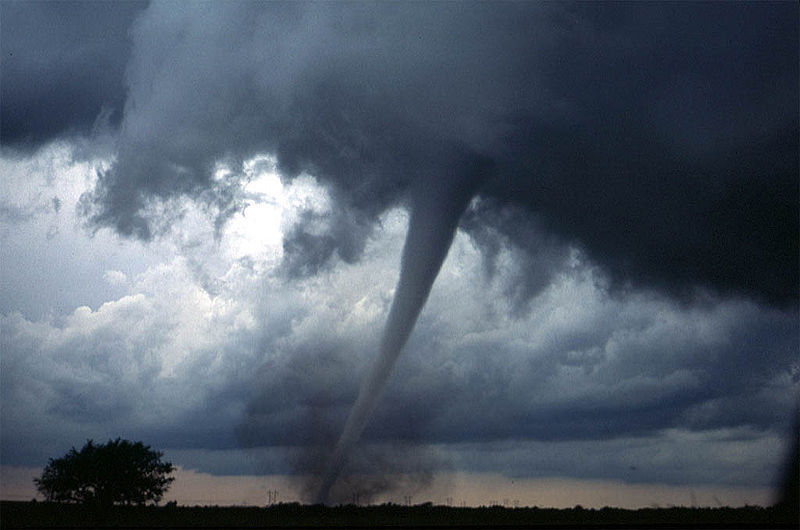
The unusually large number of severe tornadoes this year may be a sign of large-scale changes in the jet stream. When the events happen frequently such as the destruction of Joplin, Mo., the outbreak of multiple tornadoes in Alabama, and the northeast outbreak in Massachusetts, it becomes a warning that there are changes afoot in the jet stream.
The jet stream in the upper atmosphere flows from west to east and tends to meander over the southern states during the winter and the northern states in the summer. Tornadoes tend to strike most during the spring and fall shifts of the jet stream. For a tornado to occur in the Great Plains, humid air from the Gulf of Mexico must combine with the right jet stream patterns. Uplift from the jet stream helps create towering thunderstorm clouds.
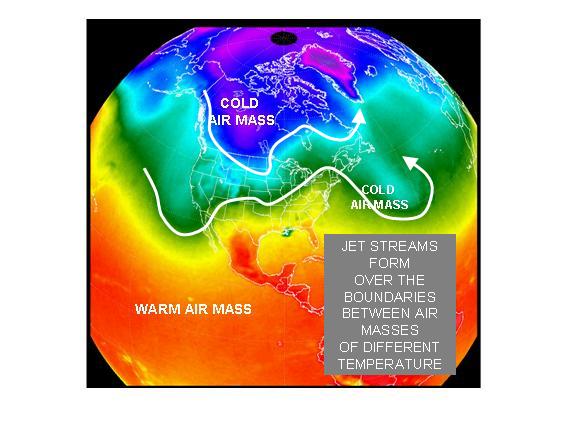 Then low altitude winds from the south, mid-level winds from the southwest, and high altitude northwest winds start the weather system rotating. A rotating thunderstorm cloud can mean tornadoes, but they are hard to predict.
Then low altitude winds from the south, mid-level winds from the southwest, and high altitude northwest winds start the weather system rotating. A rotating thunderstorm cloud can mean tornadoes, but they are hard to predict.
Scientist use observations of the jet stream to predict the likelihood of tornadoes, though they can't predict specifically when or where they will hit. (DiscoveryNews)
WILD WINDS: CHANGES IN WEATHER PATTERNS CREATING MORE SEVERE STORMS (K-State)
The Influential Jet Stream (ScienceSimply)
How the jet stream is paralysing the globe with freezing conditions (FirstNews)
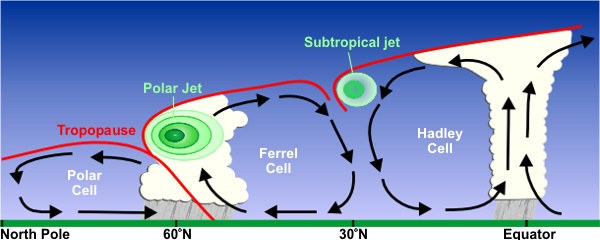
Jet streams are fast flowing, narrow air currents found in the atmospheres of some planets, including Earth. The main jet streams are located near the tropopause, the transition between the troposphere (where temperature decreases with altitude) and the stratosphere (where temperature increases with altitude). <1 > The major jet streams on Earth are westerly winds (flowing west to east). Their paths typically have a meandering shape; jet streams may start, stop, split into two or more parts, combine into one stream, or flow in various directions including the opposite direction of most of the jet.
The strongest jet streams are the polar jets, at around 7–12 km (23,000–39,000 ft) above sea level, and the higher and somewhat weaker subtropical jets at around 10–16 km (33,000–52,000 ft). The northern hemisphere and the southern hemisphere each have both a polar jet and a subtropical jet. The northern hemisphere polar jet flows over the middle to northern latitudes of North America, Europe, and Asia and their intervening oceans, while the southern hemisphere polar jet mostly circles Antarctica all year round.
Jet streams are caused by a combination of a planet's rotation on its axis and atmospheric heating (by solar radiation and, on some planets other than Earth, internal heat). The Coriolis effect describes how a planet's surface and atmosphere rotate fastest at the planet's equator while virtually not rotating at all at the poles. Jet streams form near boundaries of adjacent air masses with significant differences in temperature, such as the polar region and the warmer air towards the equator.
Meteorologists use the location of some of the jet streams as an aid in weather forecasting. The main commercial relevance of the jet streams is in air travel, as flight time can be dramatically affected by either flying with the flow or against the flow of a jet stream. Clear-air turbulence, a potential hazard to aircraft passenger safety, often is found in a jet stream's vicinity. One future benefit of jet streams could be to power airborne wind turbines.
Other jets also exist. During the northern hemisphere summer, easterly jets can form in tropical regions, typically in a region where dry air encounters more humid air at high altitudes. Low-level jets also are typical of various regions such as the central United States. (Wikipedia)

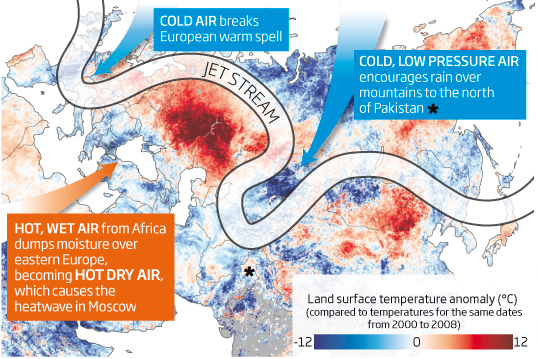
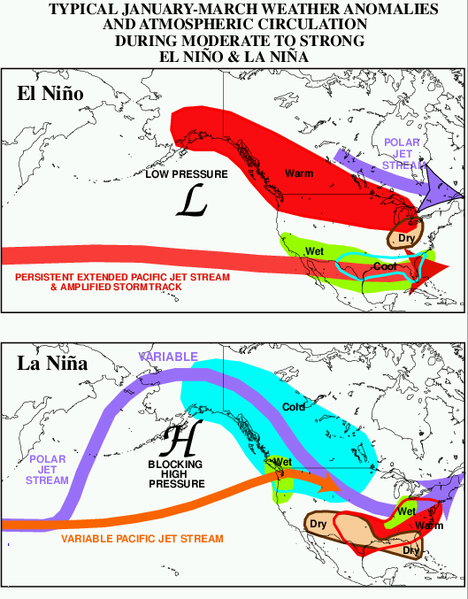
Washington,DC
Why is the Jet Stream being drawn more towards rhe North Pole, well it shouldn't take a Rocket Scientist to figure it out. maybe the EPA has to many. The Jet Stream is loaded with Carbon Soot, from Jet aircraft,which is pumping in about 80,000 tons a hour, and this crap is highly magnetic, why do you think compasses point north. It is about time people wake up and sue the airline industry and the oil companies, for the damage done to their property. Tornadoes come out of the Jet Stream, People, it's time to get your head out of the sand,
A LINGERING CONCERN
If conditions are right, newly formed contrails will begin feeding off surrounding water vapor. Like vaporous cancers, they start growing and spreading. In time, they can expand horizontally to such an extent that they become indistinguishable from cirrus clouds, those thin, diaphanous sheets often seen way up high. These artificial cirrus clouds can last for many hours, and the amount of sky they end up covering can be astonishing. One study showed that contrails from just six aircraft expanded to shroud some 7,700 square miles. NASA. To me, I wonder how much area 30 planes can cover?
I looked up a study under NASA, what the conditions were before and after 9-11, after the sky’s over the US were shut down for 3 days, and the daily temperature increase over 2 degrees, and this was 2001? These Air liners certainly have a effect on Global Warming, and it can only get worst!
I finely contacted the EPA, and they claim, that they can only follow orders from Congress on Monitoring the Jet Stream, Where have we heard that before in History. Congress in 2006, under the clean air act.Passed a law to prevent the monitoring of the Jet Stream! Did the Oil and Airline industry lobbyist get to them.
Now let’s look at what to me is heating up the planet, and it doesn’t take a Rocket Scientist to figure this out. These Jets are putting over Billions of tons of CO2 into the Jet Stream a year, and CO2 creates HEAT, Oxygen creates Cooling. How many more States like Colorado are we going to have, before Congress take action! To me the cause of these states burning up is the CO2 in the jet Stream. What kind of action will it take Congress to act, When the Temperature in Washington gets up to 125 degrees.
Well if things get worst, then you can JUST Blame your Congressman or Senator, FOR BURNING UP AMERICA!
What has to be done to get the EPA to monitor the JET STREAM green house gases coming from airlines jet Exhausts!
The strange changes in our weather is directly the result of these Green house gases. The main Green house gas causing these changes is Co2 Carbon Dioxide. 80,000 tons per hour what these jets are dumping into the Jet Stream.
There are no trees at 30,000 ft, to give off oxygen, so those gases just stay there heating up the Jet stream for just the next Tornado, flood, snow storm, or drought.
WILL THERE BE A LIVABLE EARTH IN 20 YEARS?
There are over 7000 aircraft flying over the US at any given hour, FAA figures, and they are releasing from jet exhausts over 80,000 tons a hour of Co2 in the Jet Stream. Co2 creates oxygen from trees at ground level, but there are no trees at 20,000 feet, The life of Co2 can be up to 98 years. All this bad HOT weather including Tornadoes, draught, flooding, I credit to Co2 in the Jet Stream, as weather follow the Jet Stream. Why doesn’t the EPA do something? Because they are only authorized to monitor Co2 around the airports and particles that are 250cm or more, and no where else which Congress allowed due to the heavy LOBBISTS from the Air Line industry and the Oil Companies. These people don’t care if the BURN UP THE EARTH, as long as they show a profit! In 50 years or less the earth could look like their sister planet Venus. The Co2 level on Venus is about 88% and cloud cover over 95% Have you been wondering where your Blue Skies are more and more disappearing? The surface temperature on Venus is from 300-600 degrees. Nature is showing us Global Warming, are we to dumb to see it or doesn’t the Green house industries want us to see it?
The campaign issues this year should be to save the Earth, before their is no Earth that is livable. It is interesting That Texas is burning up because if the don’t know it is the Co2 that they are dumping into the skies and the Co2 that are coming out of the skies above them. If I lived in Joplin Missouri and that tornado tore my house apart, I would be one of the first people to sue the Airlines and the oil industry, and let the courts decide. That Jet Stream was smack over Joplin Missouri along with that Tornado, last spring. The same thing can happen next year only worst. As long as those Airlines are flying the jet Stream we will have those Weather disasters. In Europe they have Carbon tax per ton on the Aircraft. USA is the biggest polluter than any nation in the world for Co2 in the Sky!
Here are the figures 1 gallon of gas produces 20 pounds of Co2. 100 gallons of gas produces 1 ton of Co2 600 pounds of jet fuel(diesel) produces 1 ton of Co2. Jet fuel is 4 times more dirty than gasoline.
The law of conservation says nothing can be destroyed, it can only change form. All that oil that they are pump out of the earth, is now going up into your lovely Blue or is it Gray skies, have you notice how your puffy clouds, are now getting little Black bottoms, well if they start getting real black and a little black spout starts dropping down out of it, you better find a cellar. There is only ONE livable planet in this solar system, we destroy this, everything, and anybody and anything,becomes NOTHING!
Jim Laughead commented on The Watchers:
HURRICANE DAMAGE IN VERMONT CAUSED BY Co2 AIRCRAFT EMMISIONS IN THE JET STREAM!
There are over 7000 aircraft flying over the US at any given hour, FAA figures, and they are releasing from jet exhausts over 80,000 tons a hour of Co2 in the Jet Stream. Co2 creates oxygen from trees at ground level, but there are no trees at 20,000 feet, The life of Co2 can be up to 98 years. All this bad HOT weather including Tornadoes, draught, flooding, I credit to Co2 in the Jet Stream, as weather follow the Jet Stream. Why doesn’t the EPA do something? Because they are only authorized to monitor Co2 around the airports and particles that are 250cm or more, and no where else which Congress allowed due to the heavy LOBBISTS from the Air Line industry and the Oil Companies. These people don’t care if the BURN UP THE EARTH, as long as they show a profit! In 50 years or less the earth could look like their sister planet Venus. The Co2 level on Venus is about 88% and cloud cover over 95% Have you been wondering where your Blue Skies are more and more disappearing? The surface temperature on Venus is from 300-600 degrees. Nature is showing us Global Warming, are we to dumb to see it or doesn’t the Green house industries want us to see it?
I think the people of Vermont did see it, Feel it, and a lot DESTROYED by it, HURRICANE IRENE. I predected it 3 days before it hit Vermont, that they would be in for a big surprise, when the Hurricane would meet up with the JET STREAM over New England.
What do you think happens to Co2 at 50,000 and below, it is Dried Ice, and what is a Hurricane a bunch of clouds tightly net, full of water. H2O, which dried ice SEEDS the clouds and guess what, creates RAIN!!!!
I feel if we don’t get the Jets out of the Jet Stream, we will just have more of the same. In Europe there are over 8 nations, that have what they call a CARBON TAX per TON on the AIR LINES but in the United States we have no tax on them and not even any monitering of the Co2 of the Jet Stream. AMERICAN AIRLINES is fighting the EPA that their be a Carbon Tax on the Air Lines. America is the largest polluter of Aircraft Co2 in the world.
Now what are you people going to do about it,”Just sit on your Ass and let it happen, till it wipes you out and your family out!” Are you going to let these Bastard Washington Lobbists, for the air line and Oil industry keep brainwashing Congress and paying them of in campaign contrbutions, like the cigarette industries did. Lobbism today is nothing but legalised Bribray, and it is about time Congress police it up to the hilt!
Now who should pay for this mess that hit Vermont, the Air Line industries and the Oil Companies. If you have destroyed property as a lot of others do then you should form a Class Action suite against them, and get JETS out of the Jet Stream.
tockkojo mullaiarrhvho commented on The Watchers:
jim – u r a stoopid tard
Jim Laughead commented on The Watchers:
I believe that Co2 in the Jet Stream is at CRITIAL LEVELS.These jets are pumping over 70,000 tons of Co2 a HOUR EVERY HOUR, into the air and jetstreams, Time for EPA to monitor the Jet Streams,before it is to late, but they can’t, due to rules and regulations that Fat-cat Washington Politicians and a Republican congress put together to protect the air Lines in 2006, which stated that the EPA could only monitor around airports and no where else. Doesn’t that sound Strange??? Is there a COVER-UP HERE?
Was it Joplin Missouri’s disaster and a lot more areas that were destroyed by tornadoes, for tornadoes are in and Follow the Jet Stream? I think its time that areas that were destroyed by tornadoes should think about suing the Air Lines, then maybe we will get some action! Co2 has a life of 100 years, and there are no TREES at 20,000-50,000 feet to create oxygen.
Americans WAKE-UP, you are being COOKED and CON to Death, by Fat-Cat Congress,Republicans, Wall Street, and “K” Street, the home of legalized Bribery. It seems these corporations will do anything for money and GREED, even Destroy your Planet! Call your Congressman or Senator, and Demand that the EPA monitor the jet streams Every day, and if it is to high, in co2, they don’t fly the jet Streams. BEFORE IT IS TO LATE, and the Planet turns into Venus, where the surface temperature is 600 degrees! It is 95% cloud cover, and co2 levels of 88%. By the way haven’t you noticed that your area has more cloud cover and RAIN! Just ask the people in Burlington Vermont!